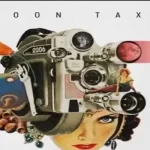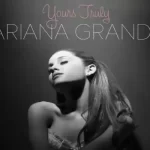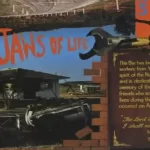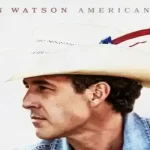✔️ What is Ska music?
Ska is a music genre that originated in Jamaica in the late 1950s and reached its peak popularity in the 1960s. It is characterized by its upbeat tempo, syncopated rhythms, and a strong emphasis on the offbeat. Ska music blends elements of Caribbean mento and calypso music with American R&B, jazz, and early rock and roll.
The sound of ska is typically driven by a horn section playing melodic lines, often featuring the trumpet, trombone, and saxophone. The guitar and piano also play important roles, providing rhythmic accents and chord progressions. Ska music often features catchy melodies and lyrics that touch on various themes, including social and political issues, love, and everyday life.
One of the defining features of ska is the skank, a guitar or piano technique that emphasizes the offbeat rhythm. This offbeat rhythm gives the ska its distinctive and energetic sound, encouraging listeners to dance and move to the music. Ska’s upbeat and infectious style laid the foundation for later music genres such as rocksteady, reggae, and ska-punk.
In the late 1970s and early 1980s, ska experienced a revival in the United Kingdom, giving rise to the subgenre known as “2 Tone.” Bands like The Specials, Madness, and The Selecter blended ska with elements of punk rock, creating a unique sound that incorporated both social and political messages. This ska revival had a significant impact on the development of subsequent alternative and punk genres.
Popular and notable ska music genres:
- Traditional Ska: Originating in Jamaica in the late 1950s, traditional ska is characterized by its offbeat rhythm, horn sections, and danceable grooves. It laid the foundation for later ska subgenres.
- 2 Tone Ska: Emerging in the late 1970s in the UK, 2 Tone ska combined elements of traditional ska with punk rock and new wave influences. It often dealt with social and political themes.
- Third Wave Ska: A revival of ska in the 1980s and 1990s, blending ska with punk, rock, and other genres. Bands like Reel Big Fish, The Mighty Mighty Bosstones, and No Doubt are associated with this wave.
- Ska Punk: A fusion of ska and punk rock, characterized by fast-paced rhythms, distorted guitars, and horn sections. Bands like Operation Ivy and Rancid incorporated ska elements into their music.
- Ska-Core: This genre combines ska and hardcore punk, resulting in aggressive, high-energy music with both ska and punk elements. Bands like Voodoo Glow Skulls and Suicide Machines are part of this subgenre.
- Reggae Fusion: While reggae is distinct from ska, some bands combine elements of both genres, resulting in a reggae-ska fusion. This style often features slower tempos and a more laid-back feel.
- Rocksteady: Preceding reggae, rocksteady evolved from ska and features a slower tempo and smoother rhythms. It’s known for its soulful vocals and emphasis on harmonies.
- Ska-Jazz: This subgenre combines ska with elements of jazz, resulting in a more complex and musically intricate sound. Horns and improvisation are often central to ska-jazz.
- Dub Ska: Merging ska with dub reggae, this genre focuses on heavy use of studio effects, echo, and reverb, creating a more experimental and spaced-out sound.
- Latin Ska: Incorporating Latin American musical influences into ska, this subgenre features rhythms, instruments, and melodies associated with Latin music.
- Skacore Punk: This genre combines ska with hardcore punk, often leaning more toward the punk side in terms of intensity. It’s characterized by its aggressive energy and use of punk-style vocals.
- Ska-Pop: Ska-pop combines ska with pop music sensibilities, often resulting in catchy and upbeat tunes. Bands like Save Ferris and The Aquabats have embraced this style.
- Ska-Revival: This term is sometimes used interchangeably with the third wave of ska, referring to the resurgence of ska’s popularity in the late 20th century.
Ska Music Songs
Ska music boasts a vast repertoire of songs that have captivated audiences around the world. One of the most iconic ska songs is “Monkey Man” by The Specials. This track showcases the energetic and infectious nature of ska with its catchy melodies, infectious rhythm, and powerful horn section. Another popular ska song is “Guns of Navarone” by The Skatalites, which exemplifies the genre’s fusion of Jamaican and American musical influences.

Ska Music Artists
Numerous talented artists have made significant contributions to the ska music scene. The Skatalites, a Jamaican ska band formed in 1964, are widely regarded as pioneers of the genre. Their innovative use of horns and jazz-inspired arrangements set the foundation for future ska bands.
| Artist | Genre | Notable Songs |
|---|---|---|
| The Skatalites | Ska | “Guns of Navarone,” “Freedom Sound,” “Simmer Down” |
| Toots and The Maytals | Ska, Reggae | “Pressure Drop,” “54-46 That’s My Number,” “Funky Kingston” |
| The Specials | Ska, 2 Tone | “A Message to You Rudy,” “Ghost Town,” “Gangsters” |
| Madness | Ska, 2 Tone | “One Step Beyond,” “Our House,” “Baggy Trousers” |
| The Selecter | Ska, 2 Tone | “On My Radio,” “Too Much Pressure,” “Three Minute Hero” |
| The Beat (The English Beat in the US) | Ska, 2 Tone, New Wave | “Mirror in the Bathroom,” “Save It for Later,” “Hands Off… She’s Mine” |
| Bad Manners | Ska, 2 Tone | “Lip Up Fatty,” “Special Brew,” “Can Can” |
| Hepcat | Ska, Reggae | “Dance Wid’ Me,” “No Worries,” “Bobby and Joe” |
| The Toasters | Ska | “Don’t Let the Bastards Grind You Down,” “2-Tone Army,” “I Wasn’t Going to Call You Anyway” |
| Reel Big Fish | Ska-Punk | “Sell Out,” “Beer,” “Take on Me” |
Ska Music Examples
To provide a better understanding of ska music, here are some notable examples:
“One Step Beyond” by Madness: This energetic track showcases the frenetic pace and catchy melodies characteristic of ska music.
“Mirror in the Bathroom” by The Beat: With its infectious guitar riff and syncopated rhythm, this song is a prime example of the ska sound.
“54-46 That’s My Number” by Toots and the Maytals: This classic ska track features Toots Hibbert’s soulful vocals and a driving ska rhythm.
Characteristics of Ska Music
Ska music is a distinctive genre with a set of characteristic elements that define its sound. Here are the key characteristics of ska music:
Offbeat Rhythm:
One of the most defining features of ska music is its offbeat rhythm. This means that the emphasis falls on the “upbeat” or the offbeat of each musical measure, creating a bouncy and syncopated feel. The rhythm is typically marked by the guitar’s “chop” or the piano’s chords.
Upstroke Guitar Technique:
Ska guitarists often use a distinctive upstroke strumming technique, emphasizing the offbeat chords. This technique contributes to the upbeat, lively rhythm of the music.
Horn Section:
Ska music frequently features a horn section, which includes instruments like trumpets, trombones, and saxophones. Horns play melodic lines and create rich harmonies that enhance the overall sound.
Walking Basslines:
Ska basslines tend to be melodic and often move in a “walking” or ascending and descending pattern. The bass provides a foundational groove that interacts with the rhythm and melody.
Piano and Organ Accents:
In addition to the guitar and horns, pianos and organs are often used to add musical accents and contribute to the overall texture of the music.
Upbeat and Energetic Tempo:
Ska music is generally played at a fast to moderate tempo, contributing to its energetic and danceable quality.
Lyrical Themes:
Lyrically, ska music often covers a range of themes, including social and political commentary, love, unity, and sometimes humor. The lyrics can be serious or light-hearted, depending on the song and the band’s style.
Call-and-Response Vocals:
Many ska songs incorporate call-and-response vocal patterns, where one vocalist or a group of vocalists sing a phrase, and then another vocalist or the audience responds with another phrase. This interaction creates an engaging dynamic in live performances.
Danceable Grooves:
Ska’s lively rhythm and upbeat tempo make it highly danceable. Skanking, a dance style associated with ska, involves rhythmic stepping and arm movements that mirror the offbeat rhythm.
Influences on Subgenres:
Ska has influenced various subgenres, including rocksteady, reggae, punk, and more. This interconnectedness has led to the development of hybrid styles that blend ska with other musical elements.
Horns as Melodic Instruments:
In ska music, horns often play a melodic role rather than just providing background support. They contribute catchy and memorable hooks that add to the song’s catchiness.
Dynamic Arrangements:
Ska songs frequently have dynamic arrangements, transitioning between verses, choruses, and instrumental sections, which can showcase solos by different instruments.
Stylistic Origins
The stylistic origins of ska music can be traced back to the musical traditions of Jamaica and the influences of American music. Ska emerged as a fusion of Jamaican mento and calypso music, infused with the sounds of American rhythm and blues. The rhythmic foundation of ska was heavily influenced by the boogie-woogie piano style popularized by American jazz and blues musicians.
Cultural Origins
Ska music is deeply rooted in Jamaican culture and played a significant role in shaping the nation’s musical landscape. It emerged during a period of political and social change in Jamaica, coinciding with the country’s transition to independence from British colonial rule. Ska music became an expression of Jamaican identity, capturing the energy, optimism, and resilience of the Jamaican people.
7 FAQ on Ska Music
What are some essential ska albums?
Some essential ska albums include “Ska Authentic” by The Skatalites, “The Specials” by The Specials, and “Too Much Pressure” by The Selecter.
Who are the key figures in the ska music scene?
Key figures in the ska music scene include The Skatalites, Prince Buster, The Specials, Madness, and Toots and the Maytals.
What is the relationship between ska and punk music?
Ska and punk music have a close relationship, particularly in the late 1970s and early 1980s during the 2 Tone ska revival. Bands like The Specials and Madness fused ska with punk rock elements, creating a unique and influential sound.
Is ska music still popular today?
While ska music may not dominate the mainstream music scene, it continues to have a dedicated and passionate following worldwide. Ska festivals and concerts are held regularly, and new ska bands continue to emerge.
Are there regional variations of ska music?
Yes, ska music has influenced and been adapted by various regional scenes worldwide. For example, the American ska-punk scene emerged in the 1990s, incorporating elements of punk rock, ska, and other genres.
What are some modern ska bands to listen to?
Some modern ska bands worth checking out include The Interrupters, The Aggrolites, and Hepcat.
How has ska music influenced other genres?
Ska music has had a profound influence on other genres, such as reggae, punk rock, rocksteady, and even pop music. Its infectious rhythms, catchy melodies, and lively energy have left a lasting impact on the musical landscape.
Conclusion
Ska music is a vibrant and influential genre that has captured the hearts of music enthusiasts worldwide. Its lively tempo, offbeat rhythm, and distinctive horn section make it a unique and recognizable sound. From its cultural origins in Jamaica to its derivative forms like rocksteady and reggae, ska music has played a significant role in shaping the musical landscape. Whether you’re a longtime ska fan or new to the genre, exploring the diverse catalog of ska music is a rewarding and enjoyable experience.








